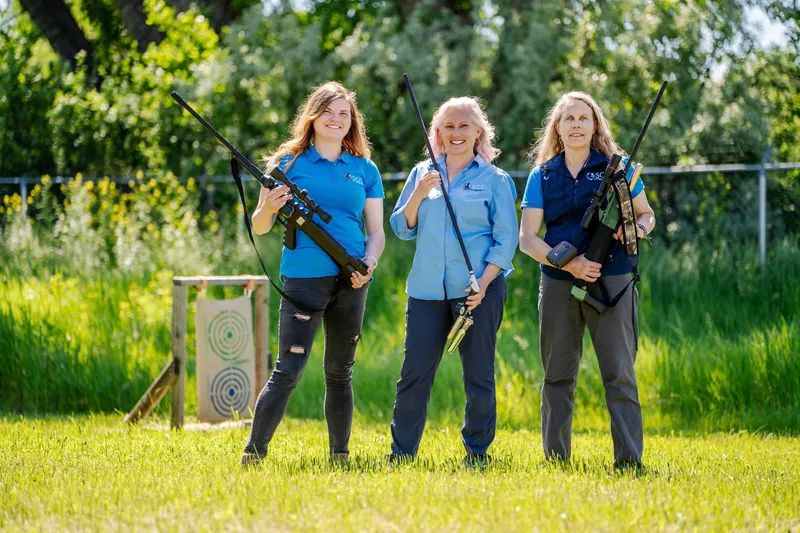
Anna, kim & kayla
Leading the Way
a unique approach to keep wildlife in check
Every wild horse herd has its own personality. Some are curious and easy to approach. Some are wary and shy, while others are ghosts, so elusive they can hardly be found. From Montana’s Pryor Mountains to the Mojave Desert in Nevada, Kayla Grams, the senior biologist for the Billings-based Science and Conservation Center, has gotten to know them all.
“Their behavior is just fascinating, and they surprise me all the time,” Kayla says.
When it comes to wild horses, overpopulation is often a problem. These horses typically live on public lands, competing with native wildlife and cattle for a limited supply of grass and water. Without population control, the herd grows larger, the range becomes over-grazed and the horses eventually die of starvation.
Kayla is part of a group of women who work out of the center — located on the grounds of ZooMontana — dedicated to providing humane, affordable, non-lethal solutions to control animal populations not just in Montana but all over the world.
Their main tool in the fight is what’s known as the PZP vaccine. PZP stands for procine zona pollucida. Zona pollucida is a protein coating found on the eggs of all mammals. It’s a sperm receptor critical to egg fertilization. When the PZP is introduced to animals other than pigs via a vaccine, their immune system mounts a response that disables their own zona pollucida, blocking fertilization. It doesn’t disrupt hormones and can block fertilization for about a year before wearing off. The more recently developed PZP22 can last up to four years.
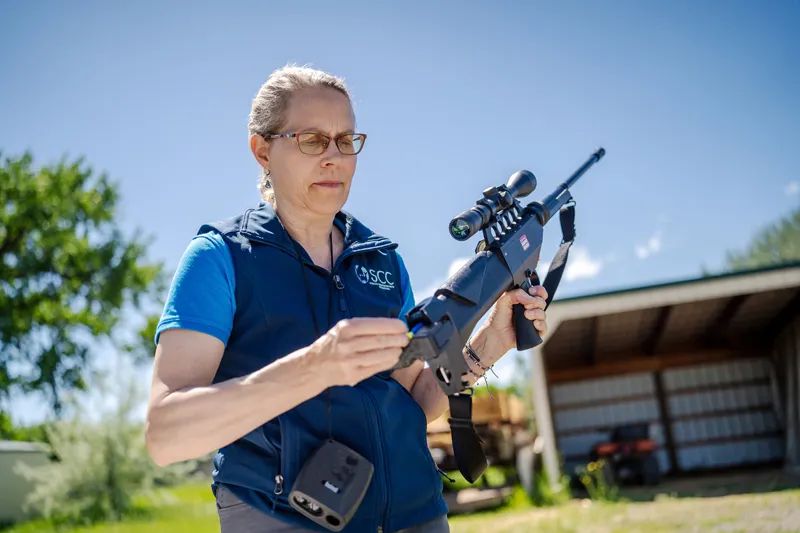
Kayla Grams
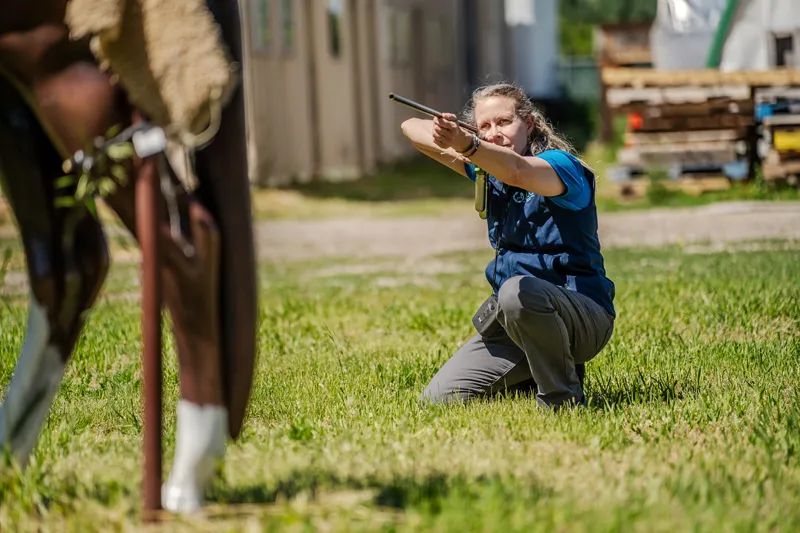
Since a wild horse is unlikely stand still for a vaccine, Kayla and those she trains use dart guns to target the mares of a herd. It requires good placement and a good aim.
“They get smart with time,” Kayla says. “You have to try to get as close to them as you can for as long as you can.”
Most wild horse herds in the United States are managed under the Wild Horse and Burro Program, which has adopted the use of PZP in many herds. The program also manages herd numbers by regularly gathering horses using helicopters and ATVs. Some are placed for adoption while others are sent to live the rest of their lives in long-term holding facilities.
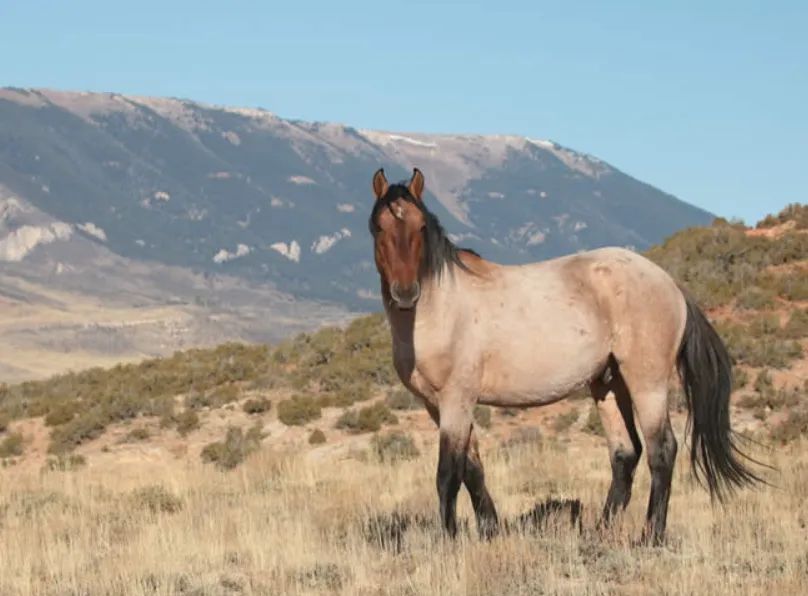
“With PZP we can insert ourselves into the problem earlier in the problem — ahead of the problem, before the foals are born,” says Kim Frank, the executive director of the Science and Conservation Center.
Right now, PZP is being used to manage 16 wild horse herds in the United States as well as herds in Romania and Hungary.
“Fertilization control is just one of the tools for managing overpopulation problems,” Kim says.
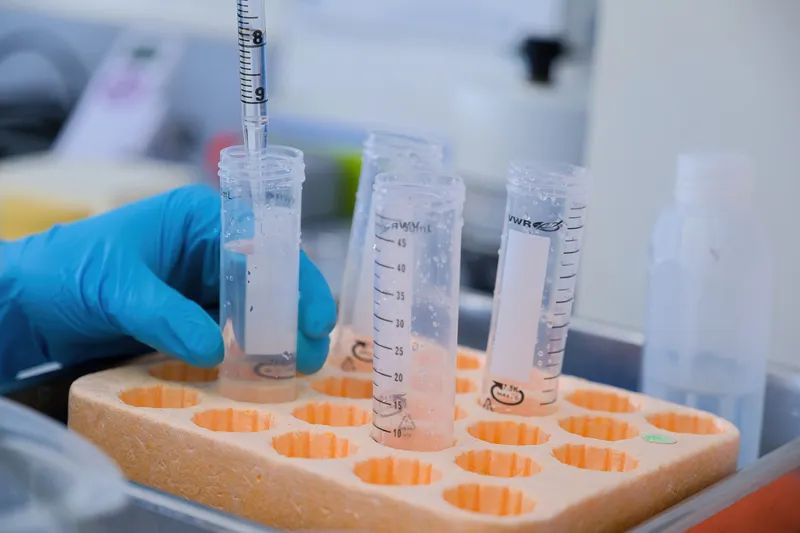
Outside of a few research facilities, the Science and Conservation Center is the only location where PZP is made. It’s also the only place that distributes the vaccine. Since the vaccine can be used on more than just wild horses, the team is providing vaccines for roughly 250 zoos and game preserves worldwide — everything from the elephants of South Africa to feral burros in Arizona to bison on Catalina Island, California.
Kim and Kayla have become well-traveled in their professional careers, which have taken them to destinations across North America, Europe, South Africa and Australia. These days, most zoos and wildlife preserves send staff or volunteers to the Science and Conservation Center for training. Afterward, Kayla will always take questions from those in the field.
“The center established the model early on,” Kayla says. “We decided, let’s work with people who are the boots on the ground — the people who are passionate about wild horses and wildlife.”

Kim's background is in business, and she started at the Science and Conservation Center in 1993 as a volunteer for the zoo. She earned a business degree and eventually worked her way up to executive director. All along she carried a passion for science.
"I think, why me? Me of all people? How did I end up with such an amazing opportunity, and then to be able to make it my career,” Kim says. “It's sometimes hard to believe.”
In addition to Kim and Kayla, there are two other women on the Science and Conservation Center team. Melissa Esser is the science liaison, and her role is to identify potential locations where PZP can be used and make connections with wildlife and zoo managers.
“I help identify barriers for people using PZP and PZP22 and help remove those barriers,” she says.
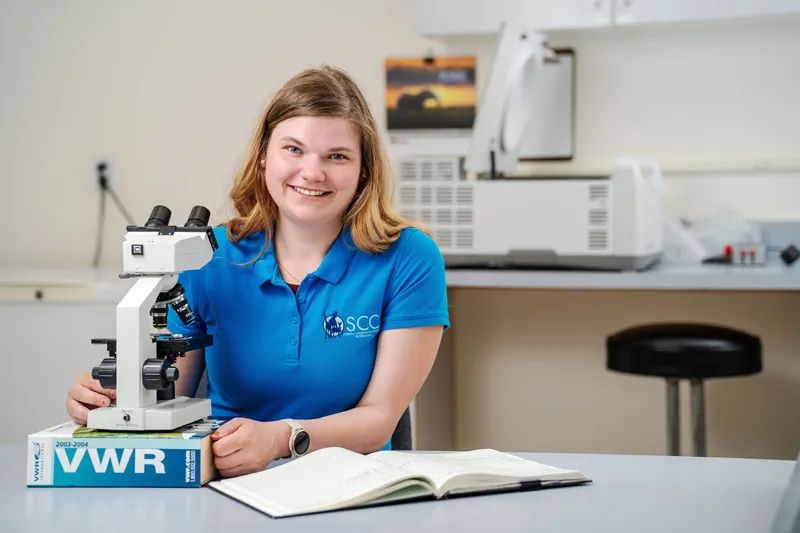
Anna Hoover, the newest member of the staff, is the Lab Technician, and her job is to make the PZP vaccine under Kayla’s supervision. All the women have a longstanding interest in science and wildlife.
The Science and Conservation Center was established as a nonprofit in 2001, but the PZP technology had been under development by Dr. Jay Kirkpatrick since the 1970s. Kirkpatrick was a critic of wild horse roundups and was looking for a humane and non-lethal alternative for population control. Kirkpatrick developed the PZP vaccine along with his colleagues Dr. John Turner at the University of Toledo and Irwin Lui at the University of California-Davis. In the late 1980s, Kirkpatrick became a member of the faculty at Montana State University-Billings and joined the staff of ZooMontana as the conservation biologist in 1993. He brought the PZP technology with him and established the lab at the zoo in 1998.
“Jay pushed for its use in the field in real life situations,” Kim says.
These days, research continues at Purdue University and the University of Ohio to develop a PZP vaccine that doesn’t need to be mixed right before injecting it in the field. Kim and her team are also committed to educating wildlife managers about using the vaccine for humane population control.
Working with wildlife and federal management agencies doesn't come without challenges. Bureaucracy often moves in slow motion, and wildlife management agencies seem to be always changing their protocols and procedures. However, Kim and her team believe in what they do.
"We get back up and wipe the dirt off and keep on going,” Kim says, “because we have a lot of people that depend on us.”
LEARN MORE at www.sccpzp.org











